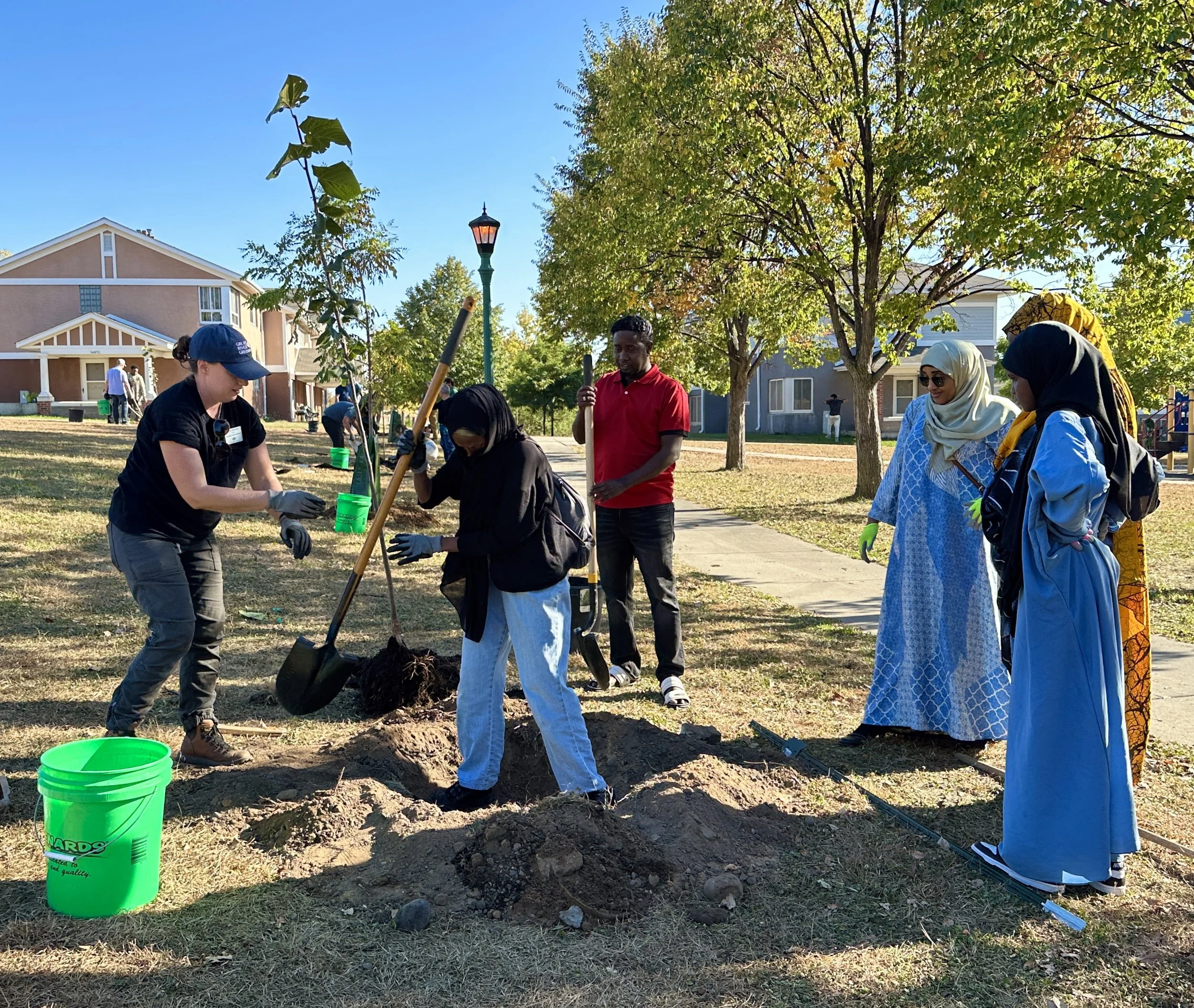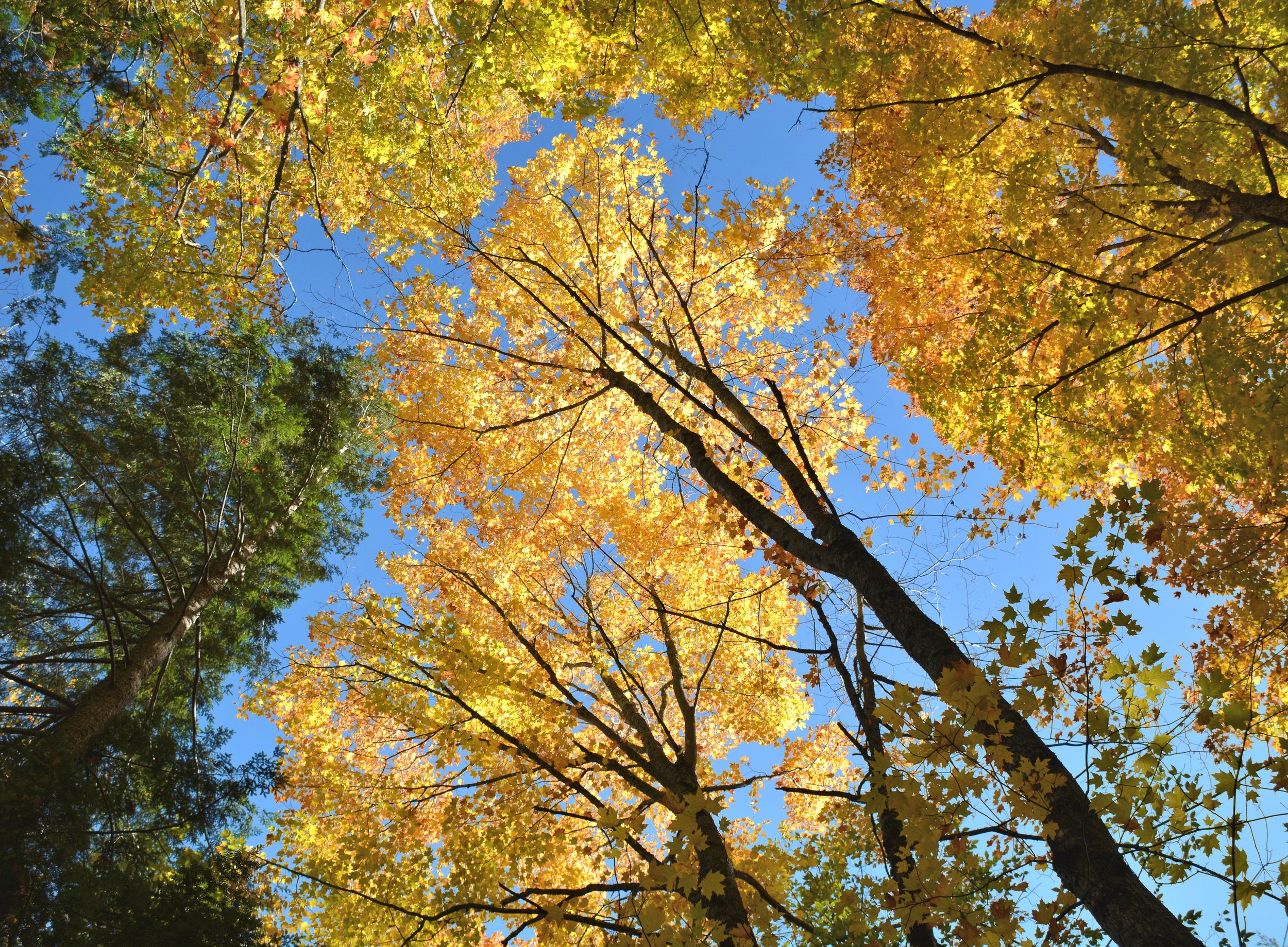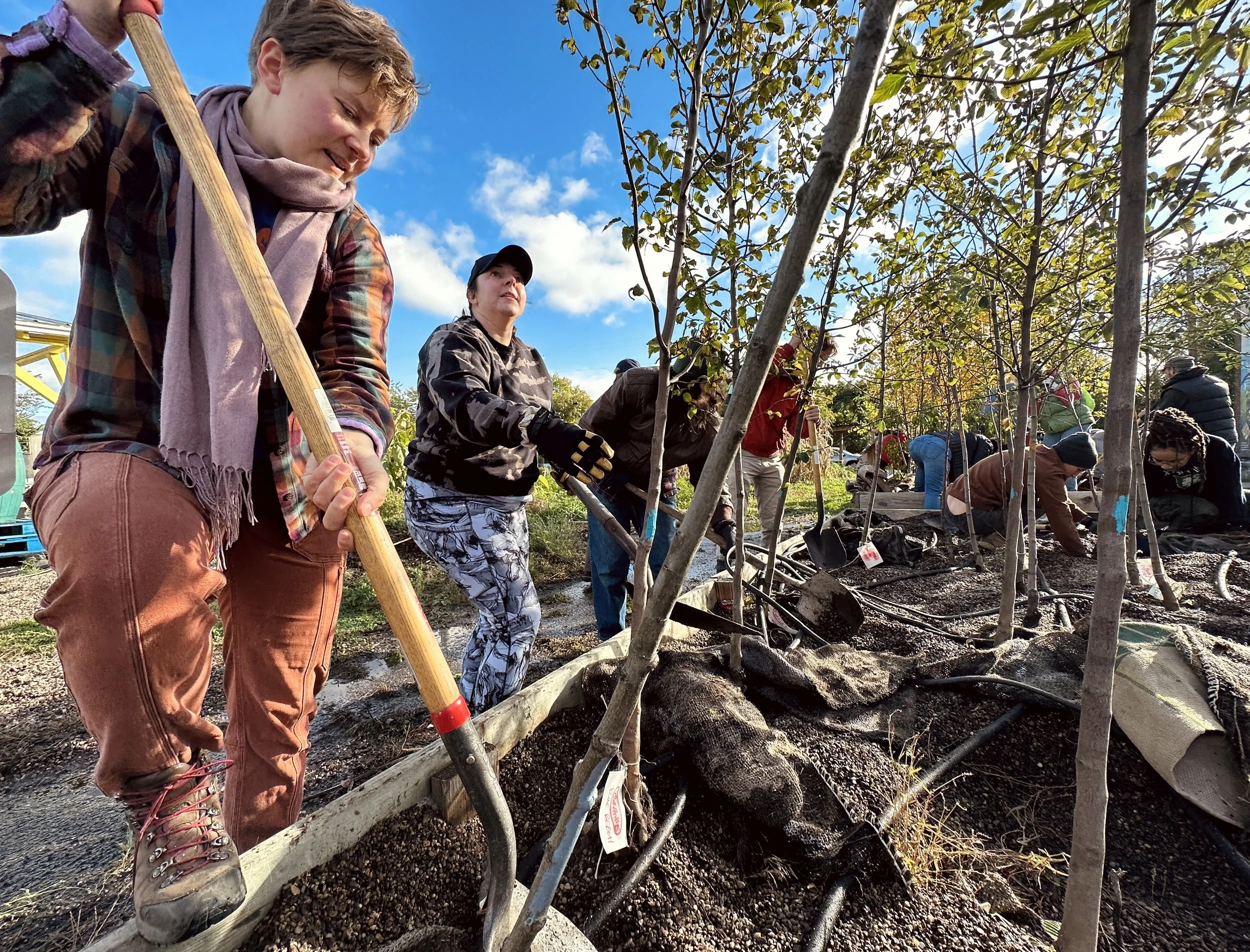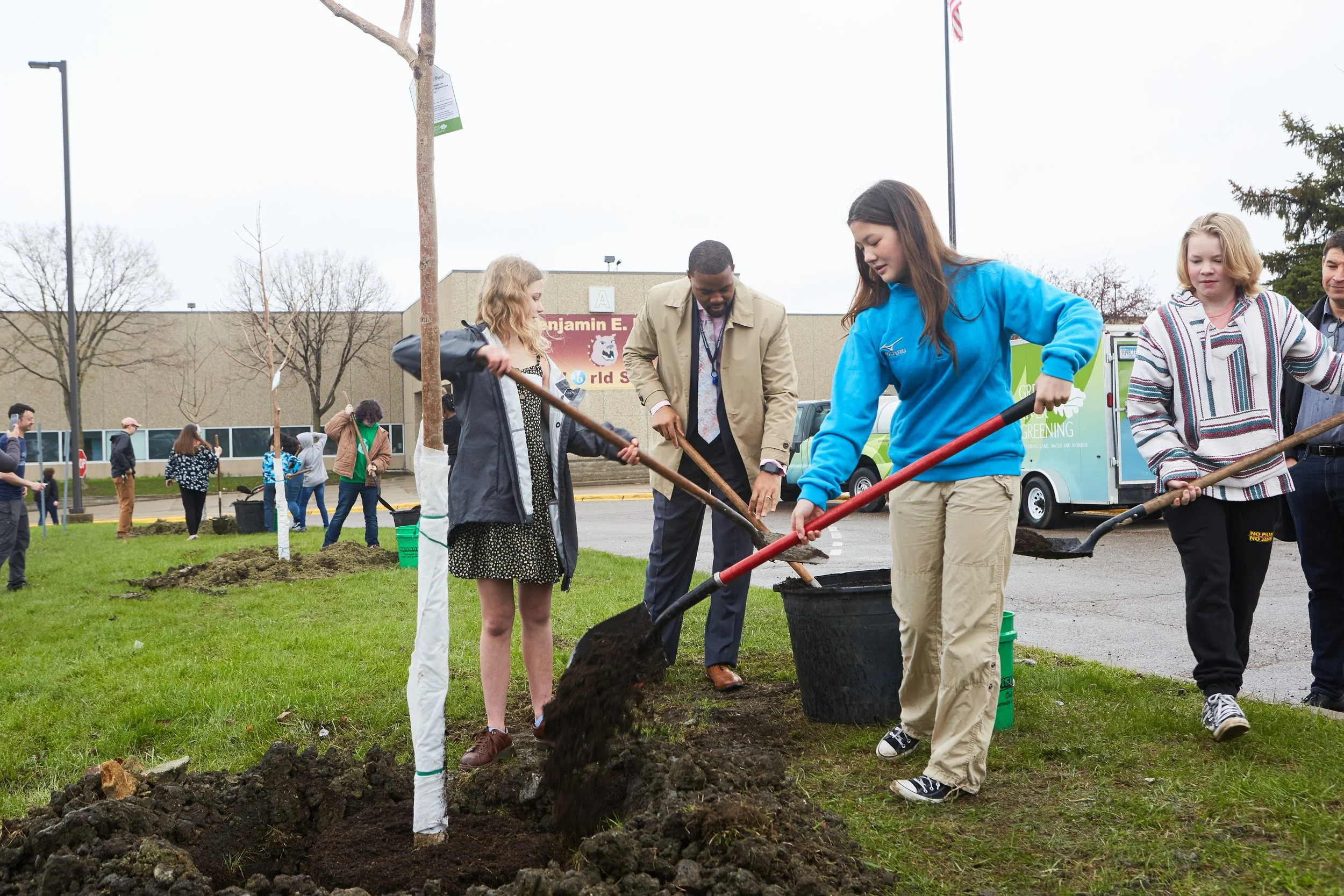Urban and Community Tree Canopy Program
Our Cooling Minnesota Communities (CMC) program is a massive tree planting initiative rooted in community-led collaboration, with the goal of planting and watering over 10,000 trees across several Minnesota cities impacted by urban heat island effects.
With our CMC program, Great River Greening is supporting healthy and resilient tree canopies throughout the state of Minnesota. With government and not-for-profit partners in Brooklyn Center, Faribault, Mankato, Owatonna, St. Cloud, and St. Paul, we are planting and watering thousands of trees, giving away free trees to community members, building gravel beds, providing stewardship education about urban heat island and how to care for trees, and more!
Great River Greening’s CMC program is supported by a $10 million grant from the USDA Forest Service’s Urban and Community Forestry Program, made possible through funding from the federal Inflation Reduction Act. It also includes additional funding from the State of Minnesota’s Environment and Natural Resources Trust Fund as allocated through the Legislative-Citizen Commission on Minnesota Resources (LCCMR)
The program grew out of our Cool Saint Paul effort, which paired tree canopy work with a robust community input and planning process led with Equity Strategies, LLC.
Funding for this project provided by the Inflation Reduction Act and the USDA Forest Service, Urban and Community Forestry Program.
USDA and Great River Greening and are equal opportunity providers and employers.
Great River Greening’s Work
We work with collaborating partners and community input to:
Plant trees,
Remove dead or diseased trees,
Build gravel beds to support bareroot tree stock,
Distribute trees through free tree giveaways,
Water newly planted trees for up to three years, and
Provide stewardship education around heat islands, tree canopies, and tree care.
PARTNERS:
The CMC program includes the following partners.
Cities:
-
Occasional free tree giveaways to residents within CEJST boundaries (federal funding); removal, planting, and watering of trees on city property (both federal and state funding)
-
Occasional free tree giveaways to residents within CEJST boundaries; removal, planting, and watering of trees on city property
-
Occasional free tree giveaways to residents within CEJST boundaries (federal funding); removal, planting, and watering of trees on city property (both federal and state funding)
-
Occasional free tree giveaways to residents within CEJST boundaries (federal funding); removal, planting, and watering of trees on city property (both federal and state funding)
-
Occasional free tree giveaways to residents within CEJST boundaries; watering newly planted trees on city and boulevard property
-
Removal, planting, and watering of trees on city property (state funding)
School Districts:
-
Tree planting and watering; education/engagement of students
-
Tree planting and watering; education/engagement of students
-
Tree planting and watering; education/engagement of students (federal and state funding)
Nonprofits/Agencies:
-
Partnership with Frogtown Green’s ongoing neighborhood tree canopy project to support and expand tree giveaways
-
Partnership with Mississippi Park Connection’s ongoing work in Hidden Falls & Crosby Farm Park addressing dying ash canopy
-
Partnership with St. Paul Public Housing campuses to remove dead/dying trees, plant and water trees with community support
-
Partner with trusted nonprofit Tree Trust for select tree removal while supporting their job training program
-
Partnership with Urban Roots’ ongoing neighborhood tree canopy project to support and expand tree giveaways
Frequently Asked Questions (FAQs):
-
In short, a wide variety of resilient trees will be selected to meet the needs of each site while contributing to a biodiverse, healthy municipal forest.
The longer answer is that it depends. First, we’ll ask several questions about the planting area. Is the area in full sun or is it shaded? Do we expect wet, dry, or drought conditions? Could this area experience salt-heavy conditions from road salt? Next, GRG will screen and select tree species that are best suited to survive in these site-specific planting conditions. This is particularly important in municipal settings where trees must, at times, withstand harsh conditions such as salt from winter street salting, heat from being the sole tree in the midst of concrete, lack of space for roots, or snow piles from winter plowing.
From there, we consider the needs of the setting including community stakeholder desires, site development plans, and the condition of the wider municipal forest. Tree height, width, canopy form, and other characteristics are considered, and our staff also focus on improving biodiversity of the wider forest to increase overall resiliency.
Typically, we will use shade/canopy trees to maximize the cooling benefits these types of trees bring to a community. Examples include: bur oak, northern catalpa, Kentucky coffeetree, common hackberry, honey locust, and American linden. We first look to plant tree species native to Minnesota; however, we will consider and use cultivars, when necessary, based on unique, site-specific needs or stresses. -
Yes. Greening’s staff members include an International Society of Arboriculture (ISA) certified arborist, a Minnesota Department of Natural Resources (DNR)-certified woodland stewardship plan writer and tree inspector, and additional scientists with decades of experience leading restoration projects, including reforestation and urban tree planting, throughout the state. They identify distressed natural areas, develop restoration/maintenance plans best suited for the natural environment, and execute plans with the help of a field crew and volunteers. Both long-term staff and new hires review industry standards and emerging best practices for site preparation, species selection, and proper techniques for planting, watering, and maintenance.
Our staff of ecologists, foresters, and environmental educators understand the importance of resilient urban tree canopies and will make informed selections of tree species and tree planting techniques to increase tree survival. Additionally, Greening staff is committed to engaging with the local communities to listen for community needs and develop a plan for ongoing stewardship of these living assets. -
Yes, the grant includes funding for watering trees for up to three years after planting. We also plan to partner with and train local stakeholders and residents in best practices for watering these newly planted trees.
-
Greening will have free tree giveaways throughout all five communities (Saint Paul, Brooklyn Center, Saint Cloud, Faribault, and Owatonna) during this 5-year grant period. All trees given away must be planted within the areas identified on the Climate and Economic Justice Screening Tool (CEJST). Once the CMC program starts and details are determined, we will share the tree giveaway dates and locations.
-
At this time, all funds are already allocated to our currently identified partners. However, please reach out if you have a project you’d like to discuss that is within the CEJST identified areas! We have alternative funding sources and tree canopy initiatives that may be a fit.
Greening’s additional tree canopy projects:
-
Cool Saint Paul is a large-scale, multi-year tree planting initiative led by Great River Greening that aims to reduce the harmful effects of urban heat islands and improve quality of life in Saint Paul communities. Launched in 2023, Cool Saint Paul will work in partnership with the City of Saint Paul, Saint Paul Public Schools, and community residents, to plant and maintain 200 trees annually on both public and private land in Saint Paul’s heat islands.
Photo Credits: Looking up at a blue sky behind a healthy tree canopy (Phil Davies); A majestic tree towers above and provides cooling shade benefits (Phil Davies); Volunteers plant trees in gravel beds at an event in Frogtown in Saint Paul (Brennan Blue); Students and staff at Benjamin E. Mays IB World School in Saint Paul plant trees on Arbor Day 2023 (Bruce Nimmer).
This program funded by the Inflation Reduction Act and the USDA Forest Service the Environment and
Natural Resources Trust Fund as recommended by the Legislative-Citizen Commission on Minnesota Resources (LCCMR)




